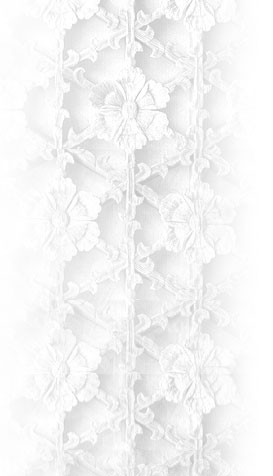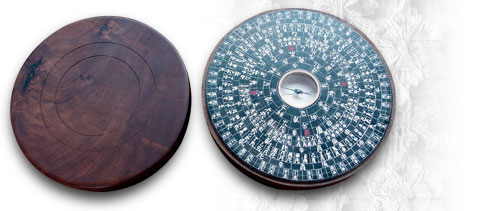that he is still far behind the level attained by his uncle, a man whom he deeply respects as a yundo artisan and tutor. For him, his uncle was both a compass for his life and a great master who taught him how to make the best yundo works. The main material of traditional feng shui compass is solid wood with no knots taken from a Jujube tree more than 200 years old. Jujube wood is normally harder than many other types of wood, doesn’t crack even after drying, and has a glossy surface whose red tone becomes more attractive as the years go by. Because Jujube wood takes time to dry and becomes so hard after drying that it makes sawing difficult, it needs to be cut into the appropriate sizes when still wet. Thoroughly drying the wood naturally usually takes approximately three years, but the time can be reduced to one year if the wood is boiled before drying. To begin working on a yundo work, the center of each wood piece is cut into the proper size and is fully dried; then it is marked with concentric circles, whose number is decided by the number of ‘tiers,’ and carving lines. What follows is the most difficult part of the whole process: inscribing characters onto the front surface. Kim describes the process of engraving characters in a space between tiers as a work that makes his eyes sore and tired. Because precision is the key in yundo making, he needs to be extremely careful to put all the characters in their right position. A simple wrong stroke in a character can ruin the entire piece, on which the artisan spent hours of arduous labor. That is why a yundo maker needs a peaceful mind as well as masterful skills during the inscription procedure. After the engraving, the surface of the piece is painted black to check if all the circles are properly carved, and then jade powder is applied to the facade so that the inscribed circles and characters appear pearly white against the black background. After that, the artist coats the characters representing the four cardinal directions with a red pigment called cinnabar. The final stage involves setting a magnetic needle onto a hole carved at the central point, and protecting it with a glass cover. Each of the characters carefully inscribed onto the front surface of a yundo piece by Master of Feng Shui Compass Making Kim Jong-dae carries, in addition to profound meaning, unique personality interwoven with mysterious energy, as well as the arrangement of characters laid out in perfect order displaying wonderful geometrical beauty. Whenever his carving knife makes the smallest movement, the amazing world of feng shui unfold onto a tiny disk. View the master's works |
|||||||
|


















